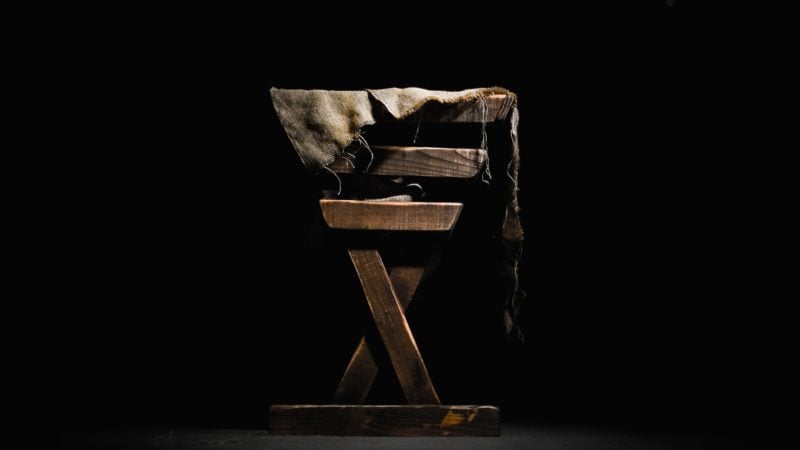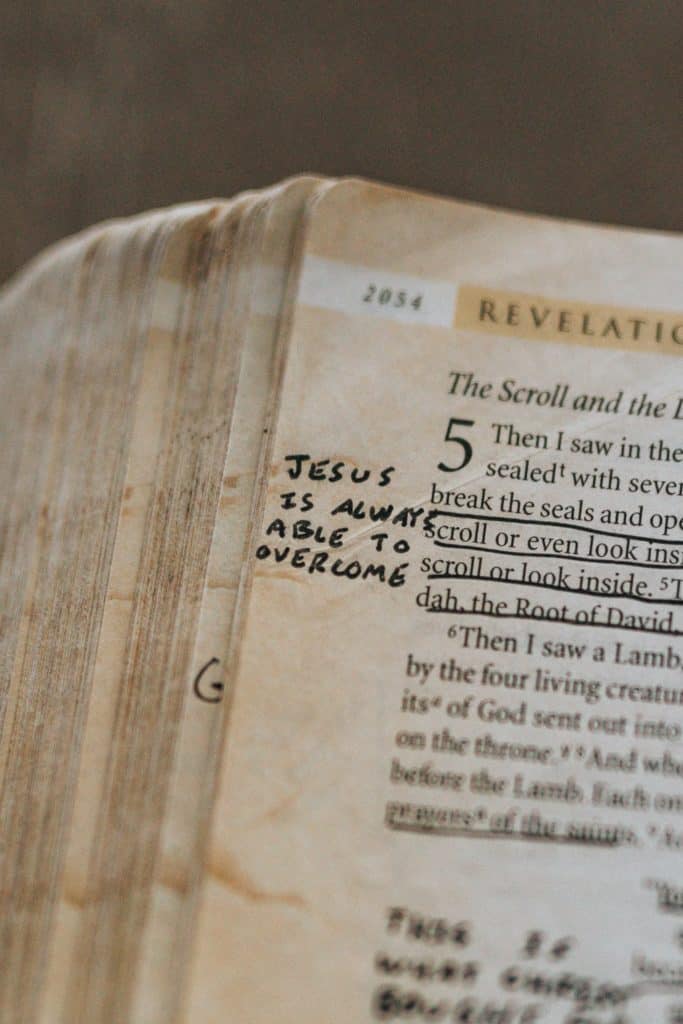Though humanity is sinful and corrupt (Romans 3:23), God is love (1 John 4:8). In His love for us He devised a plan “before the foundation of the world” (Ephesians 1:3-14) to redeem mankind from sin.
This plan involves God’s only Son, Jesus Christ, being born of a virgin, taking on our humanity, and then dying in our place—bearing the eternal consequences of sin so we can be reconciled with God (John 3:16). Through Him humanity can find atonement for our sins, as He was willing to be our substitute, suffering the condemnation that should have been meant for us.
While on earth, Jesus also lived a sinless life of love so we could have an example to live by.
His life, death, and resurrection made way for our salvation and shows us what love really looks like.
Let’s get a deeper look at:
- How Jesus is both God and human
- How Jesus faced the same struggles as humanity
- Jesus’ ministry on earth, a living example for us
- Jesus’ sacrificial death on the Cross
- Jesus’ resurrection and what that means for us
Belief 9: The Life, Death and Resurrection of Christ
In Christ’s life of perfect obedience to God’s will, His suffering, death, and resurrection, God provided the only means of atonement for human sin, so that those who by faith accept this atonement may have eternal life, and the whole creation may better understand the infinite and holy love of the Creator. This perfect atonement vindicates the righteousness of God’s law and the graciousness of His character; for it both condemns our sin and provides for our forgiveness. The death of Christ is substitutionary and expiatory, reconciling and transforming. The bodily resurrection of Christ proclaims God’s triumph over the forces of evil, and for those who accept the atonement assures their final victory over sin and death. It declares the Lordship of Jesus Christ, before whom every knee in heaven and on earth will bow. (Gen. 3:15; Ps. 22:1; Isa. 53; John 3:16; 14:30; Rom. 1:4; 3:25; 4:25; 8:3, 4; 1 Cor. 15:3, 4, 20-22; 2 Cor. 5:14, 15, 19-21; Phil. 2:6-11; Col. 2:15; 1 Peter 2:21, 22; 1 John 2:2; 4:10.)

Jesus, the Son of God, is born a human on earth
Jesus came to experience life as we do, as 100% human. Out of love for every single one of us, He chose to be stripped of His glory (Philippians 2:6-8), and was given no advantage over us when it came to living a life without sinning (Isaiah 53:2).
“The Word became flesh, and dwelt among us…” (John 1:14), but this made Him no less divine. Jesus was still 100% God (John 1:1).
This concept, that Jesus is 100% God and 100% human, can be mind boggling. But this was necessary in God’s plan to deliver us from the grip of sin while the “Great Controversy” rages on—meaning both good and evil surround us daily, warring against one another.
So, Jesus, as part of the Godhead, had to live a perfect life. Then His innocent blood could cover our sins and make it possible for us to inherit eternal life.
Philippians 2:6-8 says that even though Jesus is God, He set His divine nature aside and took on human nature. He came to serve us–to show us God’s love for us and live as our example. He came to minister to people through his perfectly obedient life. He obeyed the Father in every way, even when it led to a humiliating death on a cross.
Jesus faced the same struggles we face
If Jesus had any advantage through His divinity, His life, death, and resurrection would not have served its purpose! Christ came to prove the love and fairness of God the Father.
His death in our place would mean nothing if He used His divinity to overcome sin. He faced every temptation and hardship known to man (Hebrews 4:15) and relied solely on the Holy Spirit for His strength.—And we have access to this same power (Romans 8:26-27).
Jesus can relate to any of our struggles because of what He went through for our sake. Think about how His life went:

He was born in humble conditions
All the way back in the Garden of Eden, right after Adam and Eve’s sin, God gave them the promise of a savior. In spite of the many prophecies foretelling Jesus’ mission to be “The Lamb of God,” most of the world was looking in the wrong direction. They were looking for a powerful king who would free them from the oppression of the Romans.
But Scripture was clear: He was to be born of a virgin (Isaiah 7:14, 9:6) in the town of Bethlehem (Micah 5:2). His mother, Mary, gave birth to Him in a stable, and laid Him in a manger (Luke 2:7).
The only welcome he received was from humble shepherds at the prompting of angels (Luke 2:15-20).
He did not grow up among privilege
From His meager beginnings, He was raised in Nazareth, a town of insignificant if not poor reputation (John 1:46).
From what we know in the Bible, Jesus grew up among the poor. He spent time with His mother learning from the scriptures. He worked alongside his father, learning his trade (Mark 6:3).
He spent time growing interpersonal relationships. And we know that He was aware of His mission at an early age (Luke 2:49).
“And Jesus increased in wisdom and stature, and in favor with God and man” (Luke 2:52).
He was homeless and penniless
As an adult, Jesus focused on His ministry instead of gaining wealth or setting up a home. He “became poor” (2 Corinthians 8:9), with “nowhere to lay His head” (Luke 9:58).
He was bullied by religious leaders
Jesus was constantly quoting Scripture, preaching love, healing the sick, and encouraging people to repent of their sins and focus on God. Yet, the Pharisees did not like the amount of influence He had..
Their pride and hypocrisy led them to watch Jesus’ every move (Mark 2:16) and try to find ways to incriminate Him (Luke 13:12-16).
He was tempted by the devil himself
Jesus even dealt with direct temptation from Satan, who tried to get Him to doubt who He was and what He was on earth to accomplish (Matthew 4:1-11).

Christ’s Ministry on Earth
When Jesus was around 30 years old, He began His dedicated ministry. With His mission to
“seek and save the lost” (Luke 19:10), He lived the rest of His life “taking the form of a servant” (Philippians 2:7) to everyone.
Though disadvantaged in every earthly way, Jesus gave freely. He gave his time. He gave His energy. He gave peace and healing. He gave love.
There are so many examples of Jesus healing the sick. He healed the blind (Matthew 20:30), deaf, mute (Mark 7:31-37), and crippled (Luke 5:17-26). He healed the diseased (Mark 5:25–34) and leperous (Luke 17:11-19).
He also cast out demons (Matthew 8:16) and even raised the dead (Luke 7:11-17).
“The people were amazed when they saw the mute speaking, the crippled made well, the lame walking and the blind seeing” (Matthew 15:30-31).
And Jesus traveled, visiting other cities and countries and people groups, “teaching in their synagogues and proclaiming the gospel of the kingdom, and healing every kind of disease and every kind of sickness” (Matthew 9:35).
Jesus often drew a crowd with His sermons and parables (Matthew 5-7). He spent considerable time sharing good news with the poor (Matthew 11:5), and many others who were considered outcasts. He spent more time with everyday people than with those of high status—many of whom were corrupt and prideful.
But Jesus did confront the misguided religious leadership of His day (Matthew 23; John 8:1-11). All this while training His disciples to carry on His work after His death (Matthew 11:1, 28:16-20).
Even while busy with all that, Jesus was intentional about His relationships with His disciples. They spent time getting to know each other while traveling, or in their family homes (Matthew 8:14; Mark 1:29).
Jesus took the time to have private conversations with those who needed Him (John 3:1-21). He felt the needs of the people.
He fed the hungry (John 6:1-14). He touched the untouchable (Matthew 8:3).
He ate dinner with the outcasts of society (Luke 15:1).
He welcomed the involvement of children (Matthew 19:14).
Down to every last moment, each part of Jesus’ life and ministry was a demonstration of the Father’s love for us (John 14:9-11). Every move, every word was made to bring us back to His original plan for that relationship.
Want to have a closer relationship with Jesus and to experience the freedom, love, and healing that it brings? Check out our Online Bible studies today!

Christ’s Death
The substitutional death of Jesus Christ is the ultimate sacrifice—the most loving, selfless act conceivable toward humanity.
“Greater love has no one than this, that someone lay down his life for his friends” (John 15:13, ESV).
The Israelites made sacrifices at the temple as part of the temple service. It was a foretelling of “the Lamb of God that takes away the sins of the world” (John 1:29; Leviticus 17:11).
But, even His disciples were so focused on their current lives that they still missed the point after Jesus told them plainly (Matthew 16:21-23). His mission was to save the world from sin, not to save the Jews from the Romans.
And the time had come for Jesus to fulfill the final parts of His ministry. While celebrating The Passover (Exodus 12) with His disciples, He knew it would be His last supper with them before He was put to death.
He was the sacrificial lamb (Luke 22:15; 1 Corinthians 5:7) that the ceremonial sacrifices in the Old Testament pointed toward. And He knew the religious leaders’ evil plot to have him killed was already in motion (Matthew 26:15, 26:23-25).
So at this meal, now called the Lord’s Supper, Jesus tried once more to tell His disciples why He must die.
“This is my body given for you…This is my blood of the covenant, which is poured out for many for the forgiveness of sins” (Luke 22:19; Matthew 26:28).
Even throughout the rest the story in Matthew 26, Peter and the other disciples still did not understand that Jesus had to pay the price for our sins in order for us, who are sinners, to be a part of God’s family again.
Fortunately, Peter understood this significance later when he wrote, “you were not redeemed with perishable things like silver or gold from your futile way of life inherited from your forefathers, but with precious blood, as of a lamb unblemished and spotless, the blood of Christ” (1 Peter 1:18-19).

Christ died a criminal’s death in our place (Philippians 2:8). Crucifixion was the punishment reserved for the worst offenders. And the corrupt religious leaders of the time abused their power to portray Jesus as a criminal.
Jesus was crucified between two thieves (Matthew 27:38). One man recognized who Jesus was and asked for salvation. Based on the story of the thief on the cross, we also know that it is never too late to accept the gift of grace! “Truly I tell you today, you will be with me in paradise” (Luke 23:43).
What makes this truly remarkable is that while we, as sinners, have broken the law, Jesus did not (Isaiah 53:9). Yet He willingly took on our consequences.
“This is My commandment, that you love one another as I have loved you. Greater love has no one than this, that he lay down his life for his friends” (John 15:12-13).
Jesus’ death on the cross was the ultimate expression of God’s love (John 10:30).
When Christ died, the veil in the temple separating the Holy from the Most Holy Place was torn (Matthew 27:50-51). The sacrificial system that had pointed to Christ’s death had been fulfilled.
We no longer have a need for a priest, but can approach God directly because of what Jesus did for us (Hebrews 10:16-22). The Holy of Holies is now accessible to all.
Sin had separated us from God (Isaiah 59:2), but He chose us in spite of the cost. He loves us and takes pleasure in us, and it was His will that we be restored into a loving relationship with Him (1 John 4:10).

Christ’s Resurrection
We have a God who is not only willing to go to such great lengths to save us, but who is also powerful enough to overcome death. Christ’s story does not end with death, but with resurrection and life!
“For I delivered to you first of all that which I also received: that Christ died for our sins according to the Scriptures, and that He was buried, and that He rose again the third day according to the Scriptures…But now Christ is risen from the dead, and has become the firstfruits of those who have fallen asleep. For since by man came death, by Man also came the resurrection of the dead. For as in Adam all die, even so in Christ all shall be made alive” (1 Corinthians 15:3-4, 20-22).
Our Savior has overcome sin and death. He rose on the third day and instead of creating a big fanfare, He appeared to two women before anyone else (Mark 16:7; John 20:11-18). Mary Magdalene was even considered an outcast by society.
So why would Jesus appear to her first? To answer this question we must consider the parallels between John 20 and Genesis 3.
Both stories took place in a garden. Both stories are about women. One was sinless yet was deceived and allowed sin to enter our world. The other was sinful yet sought forgiveness.
Eve was ashamed and tried to hide in the garden from an encounter with God. Mary, when she realized the gardener was Jesus, tried to embrace God in the garden of the tomb.
In Genesis 3 the angels were sent to bar access to the Tree of Life. In John 20 angels were sent to announce that Jesus was risen–that He is indeed “the Way, the Truth, and the Life” (John 14:6)!
God wants us to know that He has completely overcome Eden’s curse.
“Therefore, just as sin entered the world through one man, and death through sin, and in this way death came to all people, because all sinned…Consequently, just as one trespass resulted in condemnation for all people, so also one righteous act resulted in justification and life for all people. For just as through the disobedience of the one man the many were made sinners, so also through the obedience of the one man the many will be made righteous” (Romans 5:12, 18-19).

His resurrection is the triumph over evil and death. Jesus has crushed the head of the serpent (Genesis 3:15). When He said, “It is finished,” His work of salvation was done (John 19:30).
He took a Sabbath rest in the grave. Then He rose again the next day to triumphantly sit on His throne at the right hand of the Father (Hebrews 1:3).
“O death, where is thy sting? O grave, where is thy victory? The sting of death is sin; and the strength of sin is the law. But thanks be to God, which giveth us the victory through our Lord Jesus Christ” (1 Cor 15:55-57).
While Satan maliciously called God’s perfect and loving character into question, in His infinite wisdom God allowed sin to play out so that no one would ever doubt His goodness again. Evil at the height of its power met love at the height of His power on the cross, and God won!
Satan had a claim over all of us because we are all sinners, but Jesus broke the bonds of sin and death.
“The one who practices sin is of the devil; for the devil has sinned from the beginning. The Son of God appeared for this purpose, to destroy the works of the devil” (1 John 3:8).
Jesus has overcome sin. He promises that His blood has covered our transgressions (Colossians 1:20). That is why we can look forward to His second coming and judgement day.
“For we believe that Jesus died and rose again, and so we believe that God will bring with Jesus those who have fallen asleep in him. According to the Lord’s word, we tell you that we who are still alive, who are left until the coming of the Lord, will certainly not precede those who have fallen asleep.
For the Lord himself will come down from heaven, with a loud command, with the voice of the archangel and with the trumpet call of God, and the dead in Christ will rise first. After that, we who are still alive and are left will be caught up together with them in the clouds to meet the Lord in the air.
And so we will be with the Lord forever. Therefore encourage one another with these words.” (I Thessalonians 4:14-18; See also Revelation 20:6)

Jesus’ perfect life, selfless death, and triumphal resurrection is the Gospel—the good news. His story is one of healing, hope and love; a story we sinners so desperately need. Jesus was sent to this earth to reveal God’s true character. Understanding God’s character is the foundation of having a real relationship with Him. God the Father sent Jesus to “seek and save the lost” (Luke 19:10) because He loves you.
“For God so loved the world that He gave His only begotten Son, that whosoever believeth in Him should not perish, but have everlasting life. For God sent not His Son into the world to condemn the world; but that the world through Him might be saved” (John 3:16-17).
Ready to start Bible studies and discover Scripture for yourself?
Want to learn what the life, death, and resurrection of Jesus means for you? Check out our Bible Studies and begin learning today!




Is He Alive?
Dead people are supposed to stay dead—that’s a fact of life. So when the Bible records the sto…
Read More
The Day Sin Lost its Power
Jesus walked up to a small table in the synagogue in Nazareth, opened a scroll, and began to read: &…
Read More
What Christ’s resurrection means to you
It was—there’s no nicer way to put it—an ugly day. Temperatures below zero, a gusty north wind…
Read More